Signs that you need a new mattress topper
If your mattress topper has been around for more than 5 years and you use it every night, it's a safe bet to say you need a new one.
However, if you only use it occasionally, for example when your existing mattress starts causing you back pain, it can be a bit more difficult to tell.
So, we're going to go over a few of the signs you need to look out for. And do note, since most mattress toppers are memory foam mattress toppers, we're going to focus on them quite a bit.
However, we'll also touch on synthetic mattress toppers and hybrids as well.
So, if you don't use a memory foam mattress topper, don't worry – we have you covered as well.
The memory foam has turned yellow
We're going to talk about this factor first as it's the easiest to spot. Namely, in the vast majority of cases, your foam topper is going to be white -at least in the beginning. So, if you take off the covers and see that your memory foam topper is not completely yellow, that means it has been a while since you bought it.
With that being said, just because your memory foam mattress topper is yellow doesn't mean you 100% need a brand-new mattress topper. This is a completely natural occurrence and doesn't mean the memory foam has “gone bad” or anything like that.
However, it does show the topper's age and how much it has been exposed to sunlight. So, if your topper is still white, odds are it's still in prime condition. However, if it has turned yellow, look for other signs and consider replacing your topper.
Visible damage
On a similar note, any tears in the mattress topper are also a bad sign when it comes to their lifespan. For example, thin memory foam toppers can get ripped or even have small chunks missing. This, of course, means that the entire memory foam slab is no longer as durable or effective as it was in the beginning.
Tears on the cover are also pretty significant. This is especially true for memory foam toppers as the covers usually serve to make the topper a bit more breathable and nice to the touch. However, you could potentially just replace the cover if the topper itself shows no signs of wear and tear.
And when it comes to synthetic, hybrid or latex toppers, the same principle applies. So, have a close look and try to see whether there are any punctures or rips in the cover and/or the topper itself.
Worse performance
While this is a bit harder to gauge, it's one of the most important factors to consider. After all, even if your topper has a small rip and the foam has turned yellow, if it still helps you get a good night's sleep – you don't have to throw it out just yet.
However, if the topper has started to perform poorly, it's a different story. After all, a mattress topper should be an extra layer of comfort and support, something that can improve the mattress underneath. So, here's what you should look out for.
Foam or latex that doesn't bounce back anymore
When it comes to both memory foam and latex, you want the topper to cradle your body and adapt to your movements. However, if you're ready to go to bed and you notice that the topper still has a giant dent in the middle, it has probably lost all of its elasticity.
This can be especially troublesome for latex toppers, as of the two, it tends to bounce back a lot more quickly.
So, if even the latex has started to sag, it has probably outlived its average lifespan.
Faulty/uncomfortable springs
While this only relates to hybrid toppers, and the Simba Hybrid Topper is one of the few on the market, it's still worth pointing out. Just like with memory foam mattress toppers, hybrid toppers can develop dents in places where the springs have lost their elasticity.
And it will probably be even more noticeable than with foam toppers, as even pocket springs can adapt to your body as much as memory foam can. Not to mention that if any of the springs have been dislodged, it can tear the cover and lead to a very uncomfortable sleeping experience.
Worse sleep quality
Even if you can't narrow down what exactly the issue is, you can always look back on your actual sleeping experience. So, if you've noticed that you've been waking up with a backache or covered in sweat, the mattress topper obviously isn't doing its job.
After all, mattress toppers should help with back pain! And if you have a cooling mattress topper, it's unacceptable for you to still be waking up covered in sweat.
In other words, a mattress topper lasts for as long as it does its job – making the existing mattress underneath more comfortable.
Stains
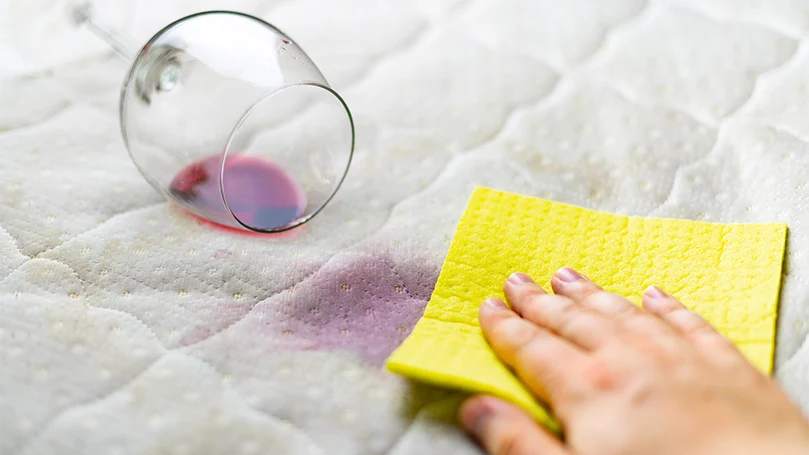
Cleaning a mattress topper can be somewhat difficult. After all, even high-quality mattress toppers usually can't just be chucked into a washing machine but rather have to be spot-cleaned – preferably as soon as the spill happens.
So, if your topper has stains, it could cause issues in the hygiene department. Plus, if your mattress topper has a down filling, the initial spill could have led to the down clumping together, which significantly lowers how comfortable that topper is going to be.
So, just like you want to clean a memory foam mattress straight away, the same goes for the toppers.
After all, toppers are a lot thinner and less durable than memory foam mattresses. Therefore, the difference will be a lot more noticeable.
How to prolong the lifespan of a mattress topper?
Let's face it, there's a big difference between your mattress topper lasting 3 years and lasting 5 years. And considering how the best mattress toppers can cost over 100 pounds, extending the lifespan of a mattress topper seems like a no-brainer.
So, we're going to go over a few things you can do to make sure your mattress topper stays in good shape for as long as possible. And do note that if you have a mattress pad, you can use most of these tips as well. After all, mattress pads are very similar to toppers, although they're usually a lot thinner.
Take care of the mattress cover
A good mattress cover can and will make life a lot easier. For one, it helps with dust mites and keeps things hypoallergenic. Secondly, it's a lot easier to wash the covers in the washing machine than to scrub down the entire topper!
So, if your topper doesn't have a mattress cover, which is common with some memory foam toppers, get one. And if it does have a cover, make sure you keep it clean and wash it as often as you wash your sheets.
If you have a good fitted sheet, you can also place it over the topper. This will also stop the topper from moving around at night. Although putting the fitted sheet on might be quite the battle.
Consider switching to a mattress protector
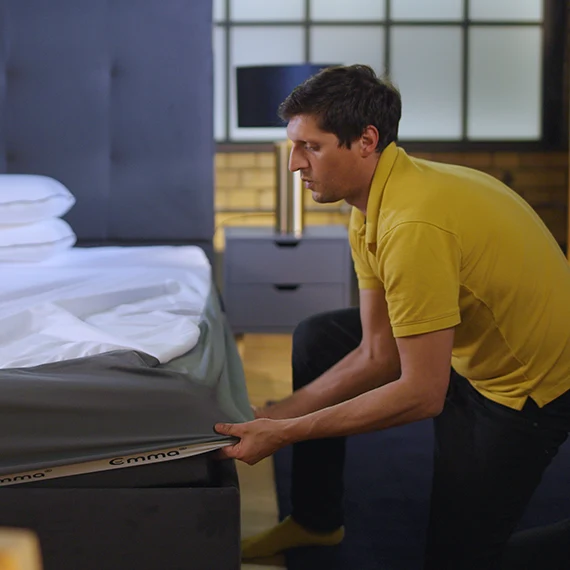
Can a mattress topper extend the lifespan of your mattress? Yes.
But can a mattress protector do it even better? Also yes.
This is because mattress protectors are typically waterproof and a lot more durable. And a waterproof mattress protector is going to stay in tip-top shape even after a few spills.
In fact, aside from a pet chewing one out, there are few things that can severely damage a protector within the first few years.
That being said, mattress protectors also don't impact the feeling of the mattress as much as a mattress topper.
So, while a good topper can significantly improve the feeling of your mattress, add pressure relief, change the firmness, and so on, a protector is just there to extend the life of your mattress.
Keep your sleeping surface clean
As we've already mentioned, getting rid of dust mites and preventing any long-lasting stains can go a long way in keeping your topper and your bed in optimal condition. So, if a spill does happen, make sure to clean the topper straight away.
Better yet, try to avoid being in a position where the topper can get dirtied in the first place. Don't eat in bed, take the topper off during the day and/or put a fitted/flat sheet over the topper for a bit of protection.
Properly storing your mattress topper
Since we just mentioned how you should put the topper away during the day, it's best to also explain how you should properly do this. First, let's get the big one out of the way – don't roll up your topper if you don't have to.
While toppers usually do come rolled up, it's ideal to unroll them onto your bed and then keep them that way. This is especially true for memory foam mattress toppers, as they might lose some of their shape after a while.
With that being said, rolling up your topper is still preferable to folding it. Folding a topper is sure to create creases and can make it a lot easier for the topper to rip.
So, in a perfect world, you'll keep the topper as in and simply move it onto a bed no one is using. If that can't happen, you can roll it up if you have to. But we'd generally say that if you have nowhere to properly store the topper, just put a fitted sheet on top of it.
Getting a better mattress topper
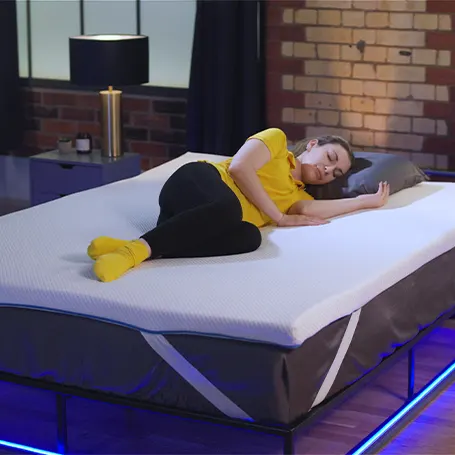
While many people get mattress toppers because it's a cheaper alternative to getting a new mattress, it's important to note that not all toppers are made equal. Just like with most bedding products, the higher quality the topper is, the longer its lifespan is going to be.
And this is due to a few reasons. For one, more premium toppers are likely going to use higher-end materials. For example, if we compare the Panda mattress topper to a regular mattress topper, we'll see that Panda has bamboo-infused foam and even a high-quality bamboo cover.
This in turn helps with breathability, keeping things clean, and ultimately, making the topper stay in shape for longer. And considering that the Panda topper has a 10-year warranty, they obviously believe in the longevity of this topper.
Secondly, higher-end toppers are more likely to be double-sided. For example, the Emma Flip topper. Having the topper be double-sided means that lumps are less likely and you can change the firmness level on the fly. So, it's not a surprise that this topper also has a 10-year warranty.
Is getting a new mattress topper worth it?
Now that we've gone over everything you need to know about mattress toppers and their durability, one question remains – is getting a new mattress topper worth it? Well, that depends on a few factors.
For one, if your actual mattress has been around for over 10 years, that may be the problem, not the topper. In other words, getting a new, high-quality mattress is going to give you the best results.
Secondly, what do you wish to accomplish? As we've said, if you just want to keep the mattress safe, a good mattress protector is going to be more efficient. And if your mattress needs just the slightest bit of cushioning, even a mattress pad can be a solid option.
However, if your mattress is relatively new but is too firm or too soft, a high-quality topper is absolutely worth the money. After all, we spend a third of our lives asleep – might as well spend it without overheating or back pain.
Conclusion
Overall, while mattress toppers can last for a long time, the 3-5 year mark is a solid baseline. And if you're wondering whether you should replace your mattress topper, just look for the signs we've described so far.
Whether it's a dip in performance or noticeable wear and tear, it's better to get a new topper than to pray that your current one will hold out for another year. But let us know what you think in the comment section. And if you have any questions about mattress toppers, feel free to get in touch!


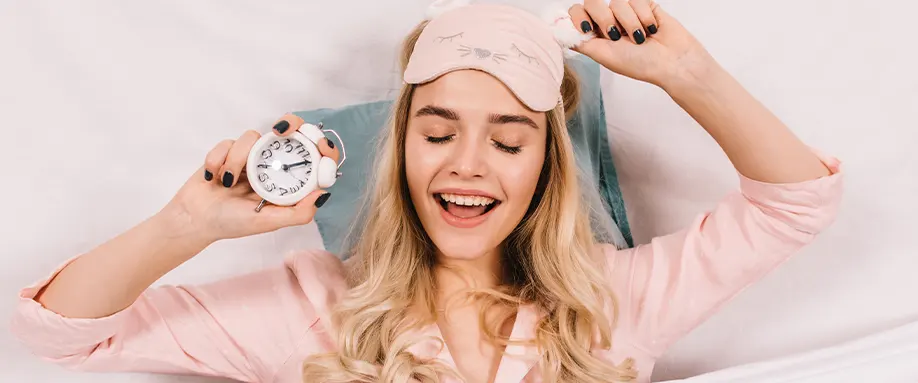
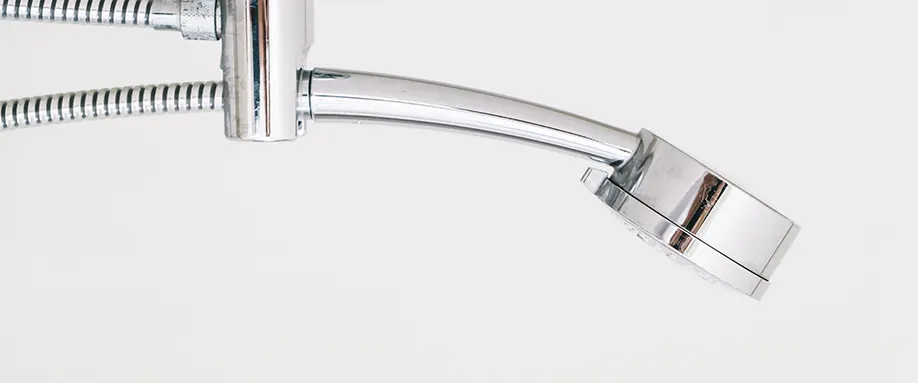











There are no comments yet
"*" indicates required fields